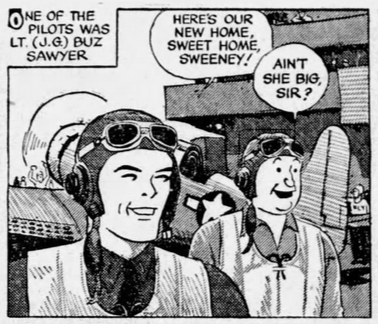It was the ranchlands of West Texas, rich in prehistoric outcroppings and an air of primeval antiquity, that had given the Iowa-born Hamlin an inspiration for “Alley Oop,” way back during the 1920s. He was based at the Star-Telegram at the time — producing a series called “The Panther Kitten,” a droll chronicle of a tenacious baseball team called the Fort Worth Cats. His nearness to the cowboy life and the natural history of the region became a springboard to “Alley Oop.”


The October issue of Fort Worth Magazine carries the origins of cartoonist V. T. Hamlin and his Alley Oop strip.
**********
Going further back in time.
The year was 1867 when the fictional character of Ally Sloper made his memorable debut in Judy magazine. Created by Charles H. Ross, a writer with an emerging talent for stroytelling, and brought to life by Émilie de Tessier, Ross’s French wife who used the psuedonym “Marie Duval,” Ally burst onto the scene with his distinctive appearance and personality that would make him an enduring comic icon.
Tor Alosson, for Toons Mag, delves into the life and hard times of the pioneering comic Ally Sloper.

Before Outcault’s Yellow Kid, before Palmer Cox’s The Brownies, Ally Sloper was a licensing bonanza.
Collector Bill Leach tells of his efforts to acquire “a set of the unsanctioned SLOPER FAMILY playing cards.”
**********
Tor Alosson then takes us back to the origins of comic books.
Töpffer’s groundbreaking work, “Histoire de Mr. Vieux Bois” (The Story of Mr. Wooden Head), was completed by 1827 but not published until 1837. This work marked the birth of what we now recognize as graphic literature, possibly the earliest European comics.

Toons Mag is a rich source of comics history.
**********
More recent comic strip history.



Eighty years ago, on November 1, 1943, Buz Sawyer by Roy Crane debuted. Above are the first six strips.


The early years were collected in now out of print editions.
Comics Kingdom has Vintage Buz Sawyer from early 1948 to, currently, mid-1960.

Where did the wooden “head” come from? “Vieux bois” translates to “old wood”.
An aberration of translation? Why did the English edition call him Oldbuck instead of Oldwood?